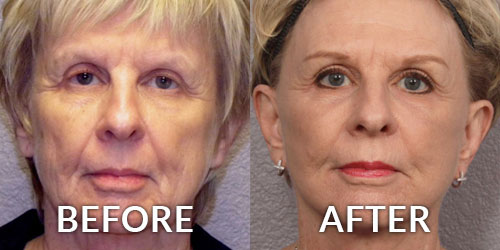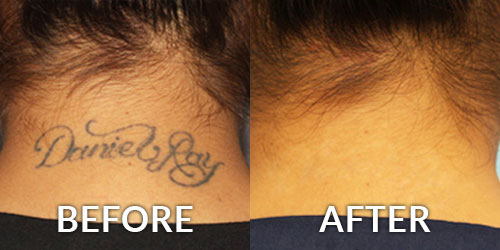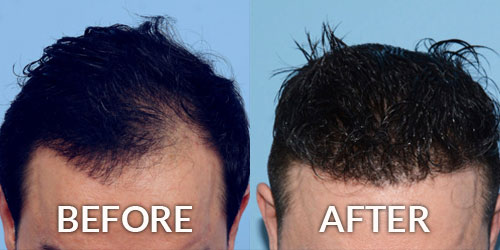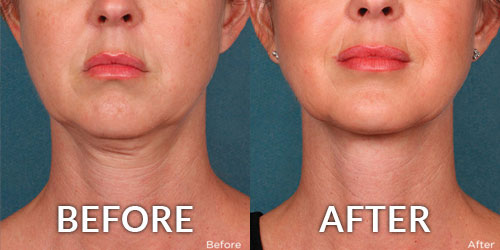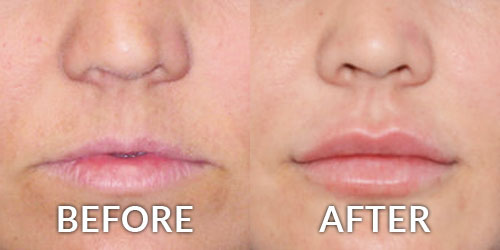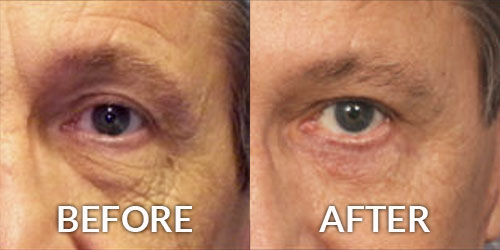Photodynamic therapy (PDT) for Actinic Keratoses
Consultations offered at our two convenient locations in Phoenix and Scottsdale

PDT is a two-part treatment designed to destroy actinic keratoses occurring on the face and body.
Actinic keratoses or pre-cancerous growths are common and recognizable as small scaly patches often seen on the scalp or face. These rough patches of skin are caused by sun exposure, and if not treated, can progress into squamous cell carcinoma. Levulan is a form of photodynamic therapy, which uses the power of light to treat medical conditions on a cellular level. This treatment coats keratoses in a medication (Levulan) that increases their photosensitivity, and then exposes them to a blue light source which creates a chemical reaction to selectively destroy dangerous cells while leaving the surrounding areas unharmed. Levulan Kerastick is FDA-approved to treat actinic keratoses that have minimal to moderate thickness–the optimal time to treat these lesions. Eliminating unsightly actinic keratoses at this stage is the best way to avoid continued growth and progression into skin cancer. If you have actinic keratoses, or any irregular skin growth or discoloration, it’s time to see a dermatologist. Contact Phoenix Skin Medical, Surgical & Cosmetic Dermatology to schedule an appointment. There is no reason to take risks with your skin, and our team of compassionate medical professionals are here to support you. You can reach the offices in Scottsdale by calling (480) 473-9111 or Phoenix at (602) 222-9111.
Contents
About Actinic Keratoses
Actinic keratoses are a common sight- especially if you live in a hot climate with fair-skinned older adults. That’s because certain skin types, after years of sun exposure, are more prone to develop this condition. As a result, these lesions are most commonly seen on the areas that receive the most sun – the hands, arms, face, and scalp.
Actinic keratoses appear as slightly discolored rough spots of skin that grow slowly, moving from a flat to raised surface that becomes increasingly hard, scaly, and prone to cracking and bleeding. But no matter what the keratosis looks like, it’s a sign of sun damage and a sign that you may be at risk for skin cancer, especially squamous skin cell carcinoma. (1)
About Sun Damage
There’s more that happens to your skin in sunlight than just a sunburn.
Roughly 95% of the UV rays that we encounter in sunlight are UVA rays, which are devastating to the skin on a cellular level. This is the kind of radiation that penetrates our skin the deepest, causing a chemical reaction that damages individual skin cells and the structures they contain. UV radiation also causes mutations in the cells’ DNA. The damaged cells aren’t able to communicate properly for regular growth and begin to multiply at an abnormal pace. (2)
Our skin regenerates outwards, and skin cells in the deeper layers of our skin move to the surface as new skin cells underneath them grow. Excess UV radiation impacts the keratinization process, which is how we form the outer layer of protective skin that eventually flakes off during the normal growth cycle of our skin. (3) The damaged cells overproduce, leading to keratinized patches of tough, flaky lesions: actinic keratoses. But besides being unsightly reminders of our age and all the times we’ve made poor decisions in the sun, actinic keratoses are also reminders that there are damaged skin cells overproliferating, which can eventually transform into squamous cell carcinoma–an invasive cancerous growth. Luckily, by eliminating these areas of dysfunctional skin cells, the cell overgrowth can be halted, and pesky patches of rough skin can be prevented from turning into something much more insidious.(2)
Candidates
Candidates for treatment with Levulan PDT have actinic keratoses in early stages, which can present as discolored rough patches or small raised lesions with moderate scaling. It’s always important to have a dermatologist examine any skin abnormality as soon as you notice it. And to be sure that you are in fact experiencing actinic keratoses and not another dermatological condition, a skin examination is necessary. However, there are certain circumstances that make some patients more likely to experience this skin condition than others:
- Caucasians with fair skin
- History of extended sun exposure
- Are immunocompromised
- Are over the age of 40
- Male, although this condition affects patients of all genders
Know your skin. To receive an examination and accurate diagnosis, schedule an appointment at Phoenix Skin today. Once we have identified your skin condition as actinic keratoses, we can determine whether you are a candidate for Levulan PDT. Call our Scottsdale office at (480) 473-9111, or our Phoenix location at (602) 222-9111 to get started. In the meantime, take a look at our blog to learn more about the other medical and cosmetic dermatological services we offer!
Personal Consultation
Phoenix Skin has a full staff of trained professionals that will make sure your visit is relaxing and informative. We’ll review your medical history and skin health concerns before performing a comprehensive skin exam. the areas of concern will be examined, as well as larger areas of skin (you may be asked to wear a gown so we can identify any other skin abnormalities). Because actinic keratoses are common on the scalp, we will also search through the hair to examine the skin below. To better examine suspicious areas of skin, a dermatoscope is used, which is a small magnifying tool with a light. This is held against the skin to offer a close-up view of any skin irregularities to see skin growth patterns that will help them make a diagnosis. If you are experiencing potential actinic keratoses that are large, bleed, or are inflamed, biopsies may be necessary to rule out the possibility of skin cancer. Once you’ve been diagnosed with actinic keratosis, we’ll determine whether your lesions will be treated effectively with Levulan PDT. The treatment is covered by most insurance companies. If you are determined to be a candidate for treatment, our dedicated billing experts will verify insurance coverage prior to your treatment. We also offer cash pricing for those without insurance or who wish to pay out of pocket.
Procedure
A Levulan treatment will require two sessions at our Arizona offices. During the first part of your treatment, the medication will be applied directly to the individual keratoses with the Kerastick. After the medicine is applied, you’ll need to wait for it to “incubate.” The incubation time is one hour when treating the face and two hours when treating the hands. We provide a comfortable, private environment, and during this time you can catch up on your favorite TV show, read a book, or get work done on your computer. After the incubation period, you’ll be given protective eyewear and positioned in front of a photodynamic therapy lamp that emits a powerful blue light. The wavelength of this light is specially calibrated to only penetrate the outer layer of skin and target the areas that are now hyper-sensitive to light. The active ingredient in the medication has permeated the skin cells in the treatment area, and once exposed to this wavelength, will cause a chemical reaction to destroy the lesion-producing cells, allowing healthy skin cells to grow in their place.
When the treatment is completed we will discuss the aftercare instructions and provide you with a protective hat. The specialized Levulan formula causes the treated area to become extremely sensitive to light, so you’ll need to avoid any sun exposure or strong indoor light for 48 hours after the treatment.
Recovery
For the next 48 hours after your treatment, it will be extremely important to avoid any sunlight. Plan on wearing long sleeves if you’ve had your arms treated. If you’ve had your face or scalp treated, be sure to bring a wide-brimmed hat so that the area is not exposed to any sunlight on your way home. A stinging or burning sensation in the treated area is normal and will subside over the coming weeks. Since Levulan can only be used to treat one area of the body at once, you may need to return if you need to remove actinic keratoses from more than one area. Similarly, it’s important that lesions being treated have a sufficient border of untreated skin surrounding them, so if you have a single area with a large number of keratoses, you may need to return to treat other keratoses in the area. Levulan treatments on the same area can be repeated after 8 weeks. Levulan PDT has a high success rate, and after several weeks following their final treatment, patients can expect smooth healthy skin.
Cost
The cost of your Levulan treatment will depend on the areas you’ve selected to treat, and the number of treatments required to successfully remove the actinic keratosis lesions. The first step in estimating the cost of this procedure is to schedule a consultation appointment and receive an accurate diagnosis for this condition.
References
- Sinclair R, Baker C, Spelman L, Supranowicz M, MacMahon B. A review of actinic keratosis, skin field cancerisation and the efficacy of topical therapies. Australasian Journal of Dermatology. 2020;62(2). doi:10.1111/ajd.13447
- Reinehr CPH, Bakos RM. Actinic keratoses: review of clinical, dermoscopic, and therapeutic aspects (Corrigir nos altos de página onde tem o título). Anais Brasileiros de Dermatologia. 2019;94(6). doi:10.1016/j.abd.2019.10.004
- Shetty S, S. G. Keratinization and its Disorders. Oman Medical Journal. 2012;27(5):348-357. doi:10.5001/omj.2012.90


